Impact feature: thermal shock in quartz
Using shock effects in quartz as an impact indicator has a long tradition. They are created in the first phase of impact cratering (contact and compression phase) and produce well known PDFs, PFs and diaplectic glasses in various minerals. The fact that thermal shock has so far been virtually ignored in impact research is due to the fact that the effects mentioned above precede thermal shock during pressure release. However, if extreme shock pressures lead to melting and vaporization of the rocks (> roughly 50 GPa), violent thermal shock can occur when slightly or not at all shocked material is immersed in melt and/or vapor. In anticipation of a publication, some photomicrographs of isolated quartz grains from meteorite impact sites are shown here, which have obviously experienced such a short thermal shock and reveal quite unusual micro-fracturing patterns.
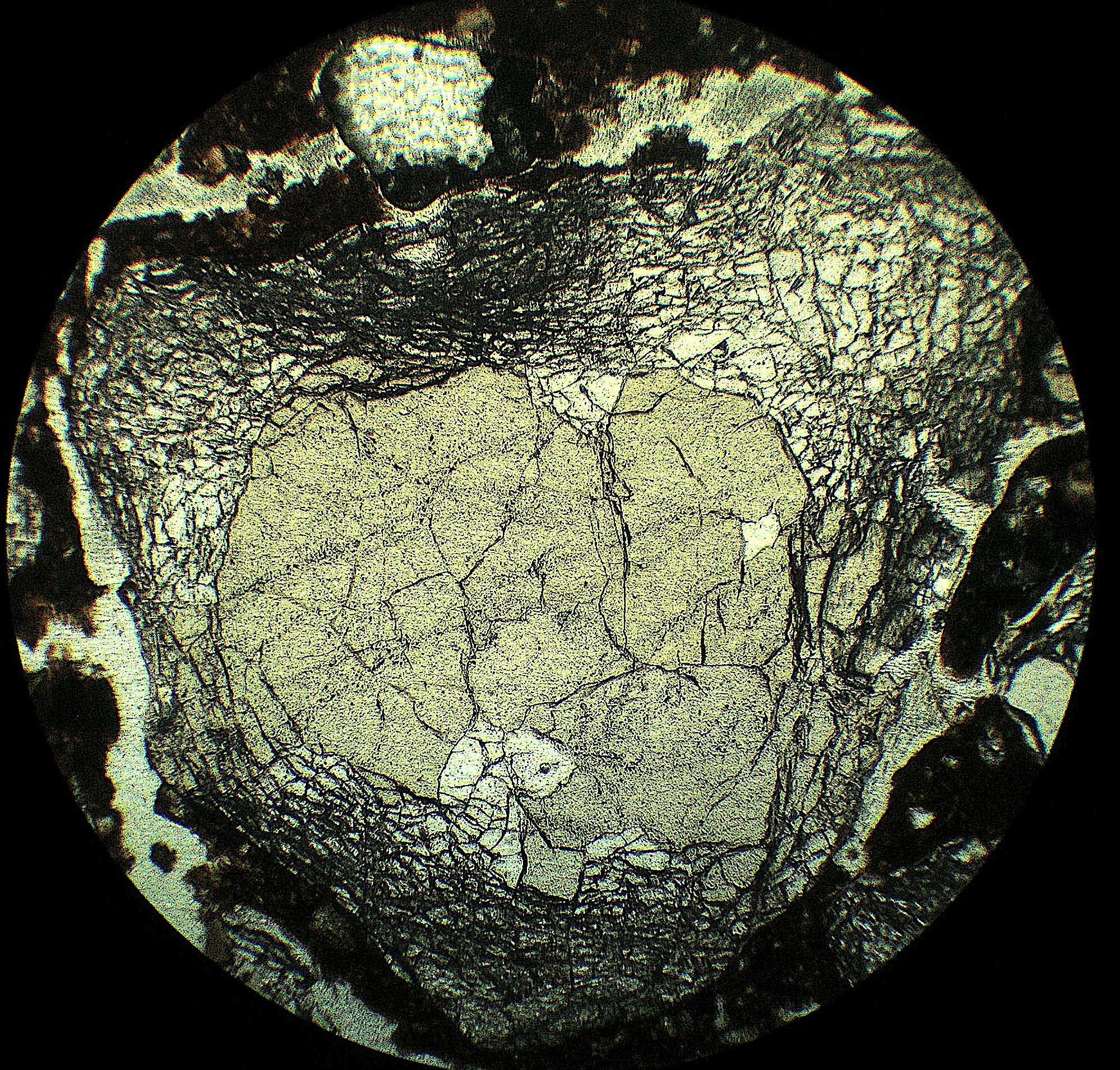
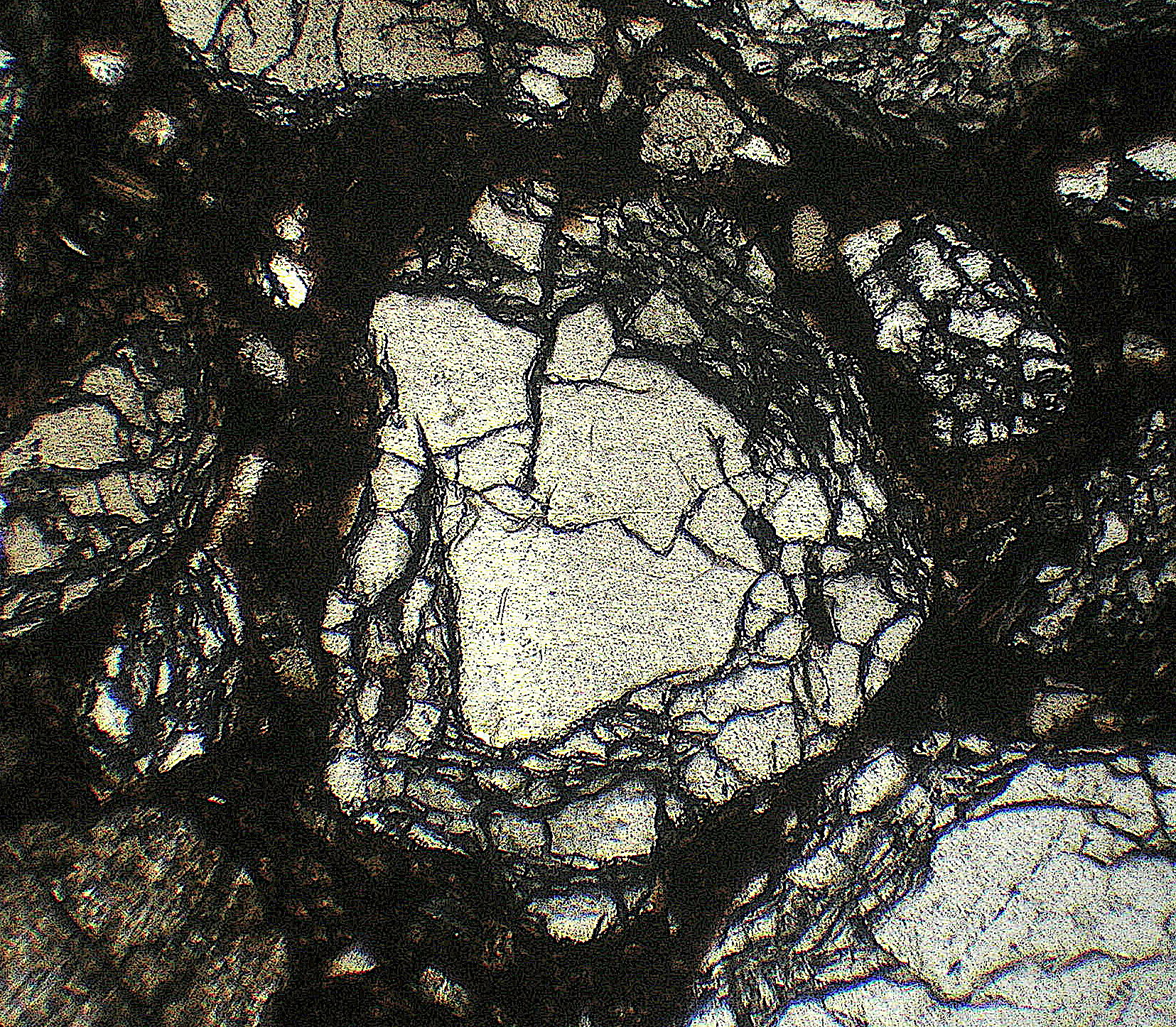
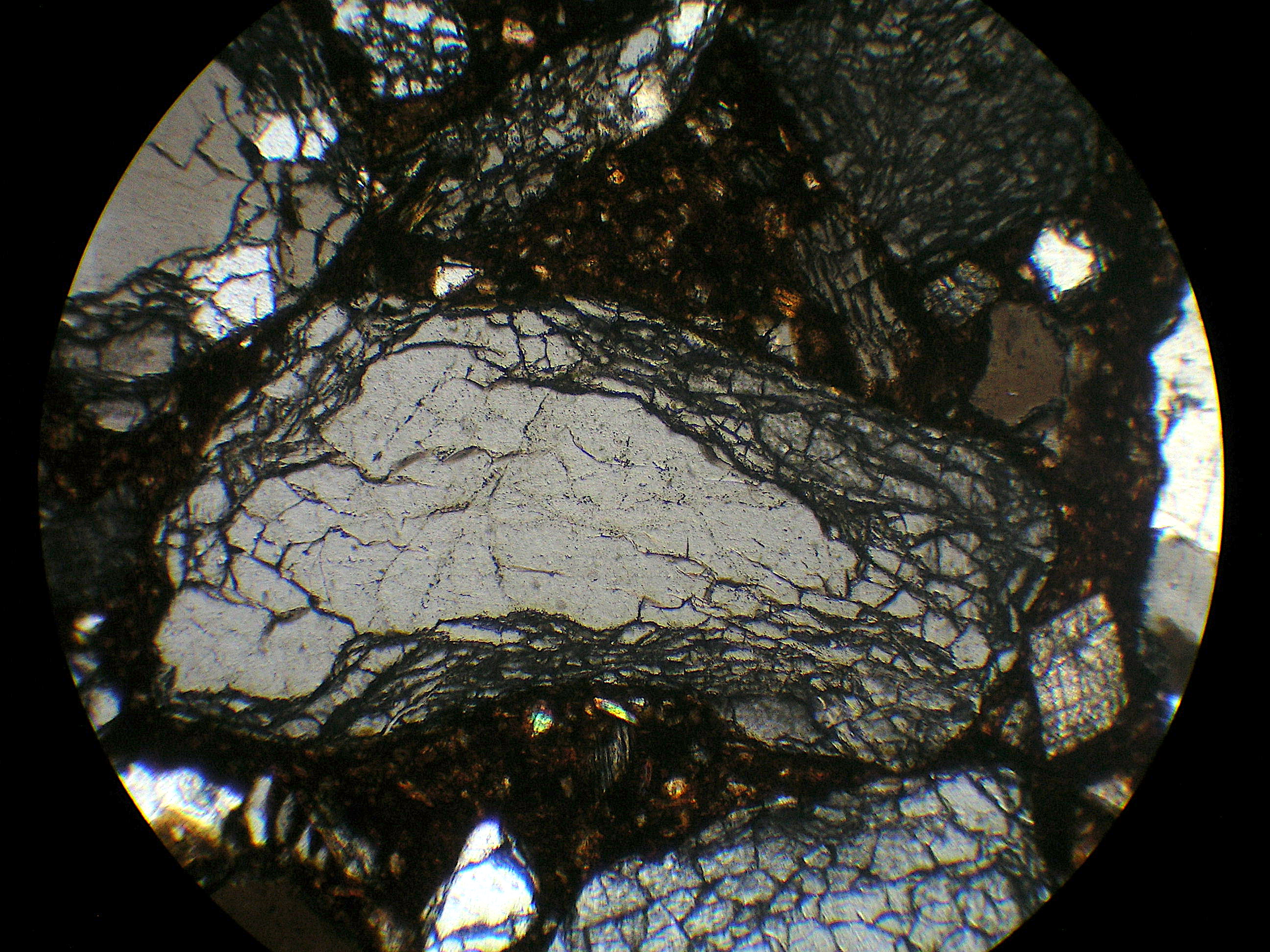
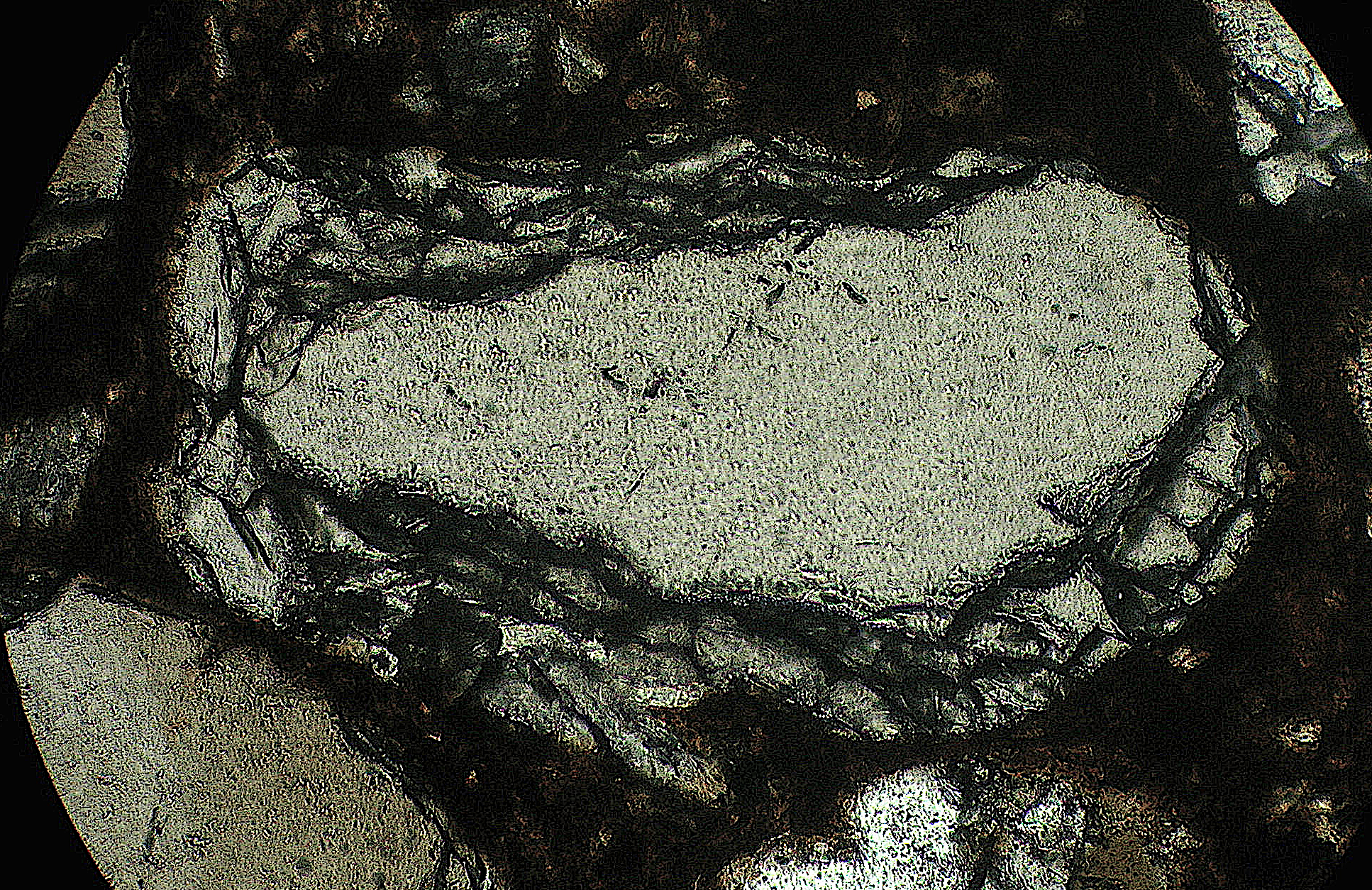
Photomicrographs (crossed polarizers): Isolated quartz grains (size about 1 mm) “floating” in a fine grained matrix. In many of the grains this micro-fracturing is more or less sharply limited to a concentric rim zone encasing a largely untouched core with a few sub-planar fractures in some cases. Chrudim impact, Czech Republic.
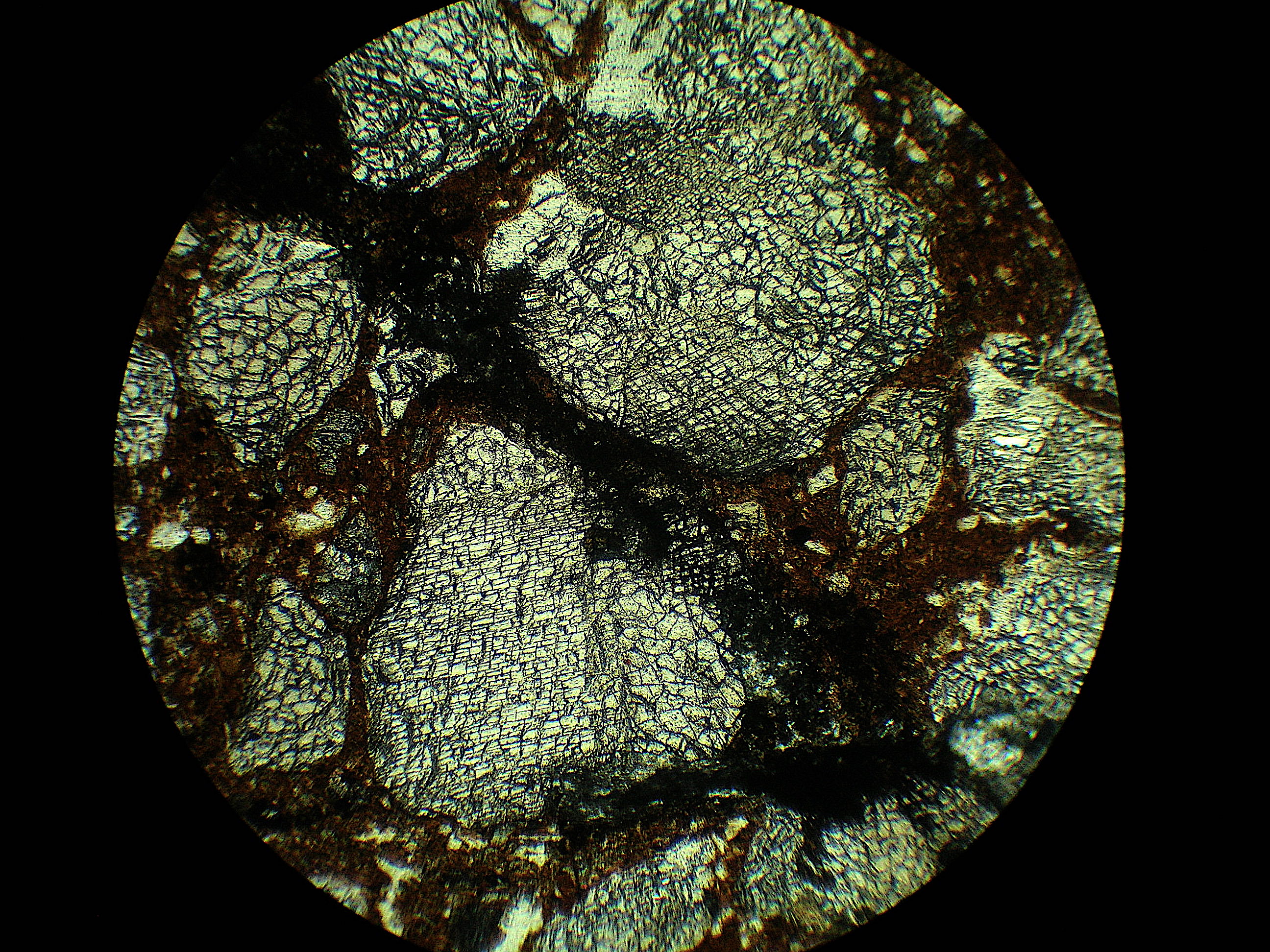
Quartz grains from the same impact site showing irregular micro-fracturing that merges into sets of planar fractures (PF) after the rhombohedron.
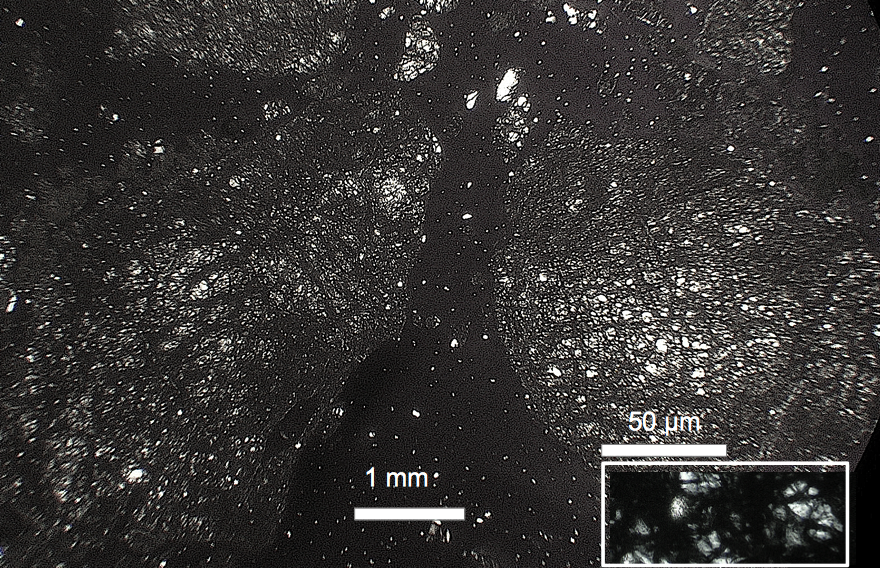
Saarland impact: Quartz grains in impact melt nearly pulverized by extreme micro-fracturing.






































































